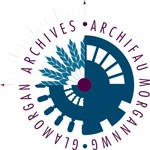Prior to the 1840s, Cardiff’s Roman Catholic population was quite sparse. Numbers then increased substantially with the growth in immigration from Ireland. St David’s (predecessor of the present cathedral) was the first Catholic church in the town. Built in 1842, it occupied a site which now lies under the Motorpoint Arena. By 1861, there were more than 10,000 Catholics in Cardiff – a third of the total population – and the need had arisen for a second church. A site was acquired from the Homfray Estate and St Peter’s Church, Roath opened on 24 September 1862.

The local priest, Father Fortunatus Signini, established the first St Peter’s School in 1868. It was housed in a former Wesleyan chapel, close to the church in what is now Bedford Place. However, larger premises were needed. With the Marquess of Bute’s help, a site was obtained in St Peter’s Street, across the road from, and slightly west of the church. Plans were drawn up by Cardiff Architect, W. P James, and approved by the Local Board of Health on 27 October 1871. Initially having a single schoolroom, 60 feet (18 metres) long and 30 feet (9 metres) wide, the new school opened on 1 August 1872. It was extended in 1902, to provide additional classrooms; girls were now taught on the ground floor and boys upstairs. A further extension in 1928 doubled the size of the school while the layout of rooms in the older building was also re-ordered. In 1977, St Peter’s School moved to the former Cardiff High School premises in Southey Street. The St Peter’s Street building was demolished and its site is now occupied by a development of flats, named Richmond Court.
Mary Traynor’s sketch illustrates the original 1871 building, as it appeared in 1982.
David Webb, Glamorgan Archives Volunteer
Sources consulted:
- Mary Traynor Collection (ref.: D1093/1/2)
- Cardiff Borough Records, plans for proposed Catholic School, St Peter’s Catholic School, St. Peter’s Street, 1871 (ref.: BC/S/1/90594)
- Cardiff Borough Records, plans for additions to St. Peter’s School, St. Peter’s R.C. School, St. Peter’s Street, 1902 (ref.: BC/S/1/14822)
- Cardiff Borough Records, plans for alterations & additions to school, St. Peter’s R.C. School, St. Peter’s Street, 1928 (ref.: BC/S/1/25801)
- Archdiocese of Cardiff: A History of St Peter’s Parish, Roath, Cardiff 1854-2001



